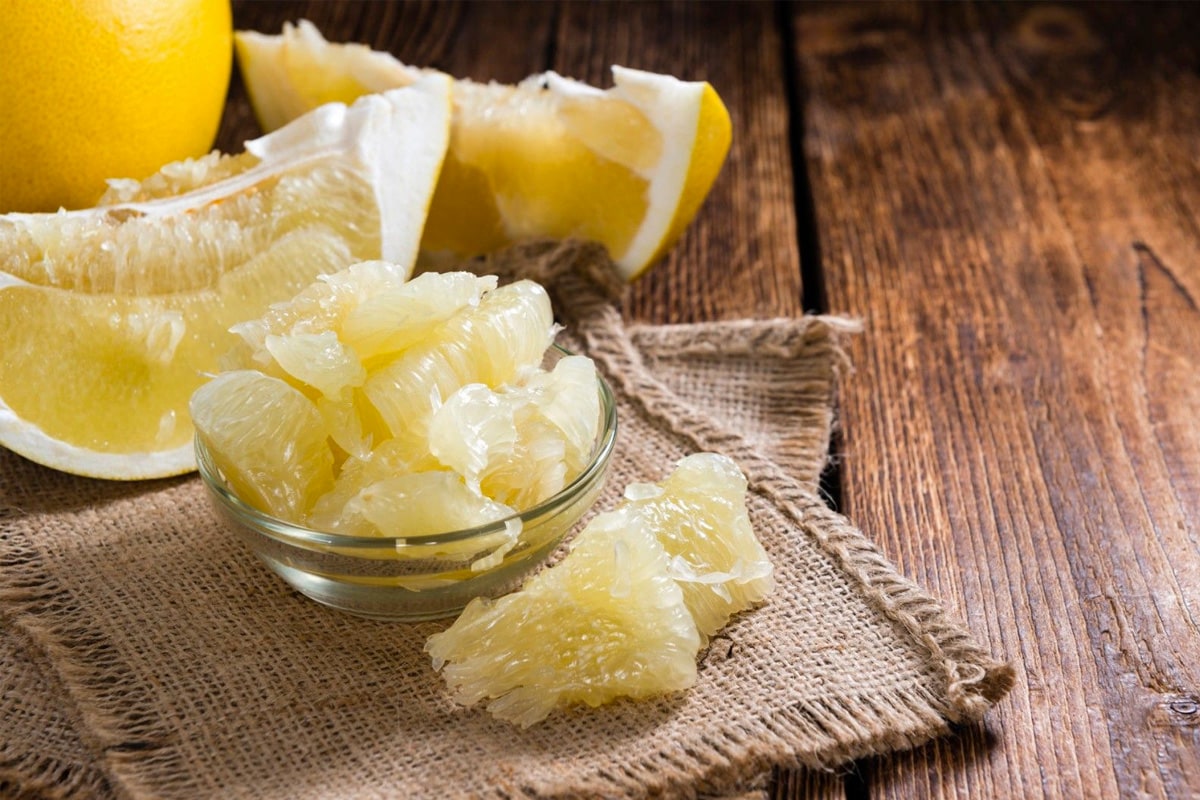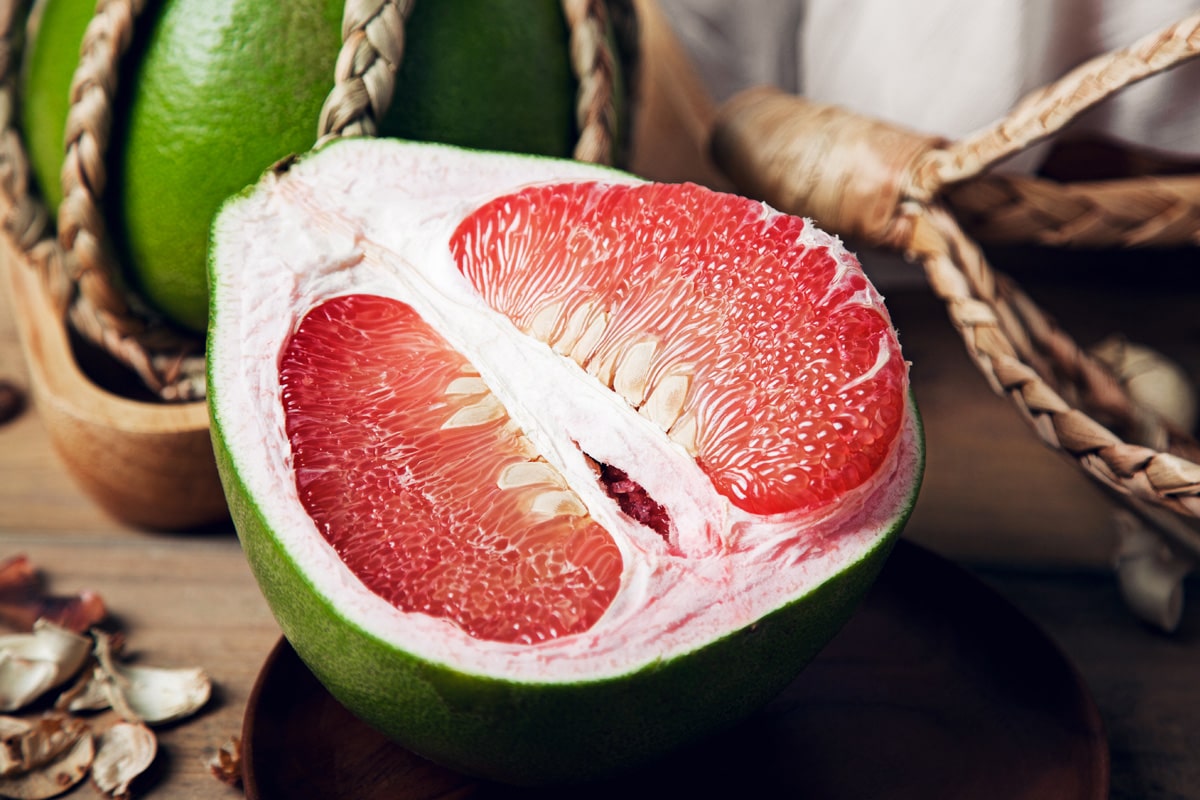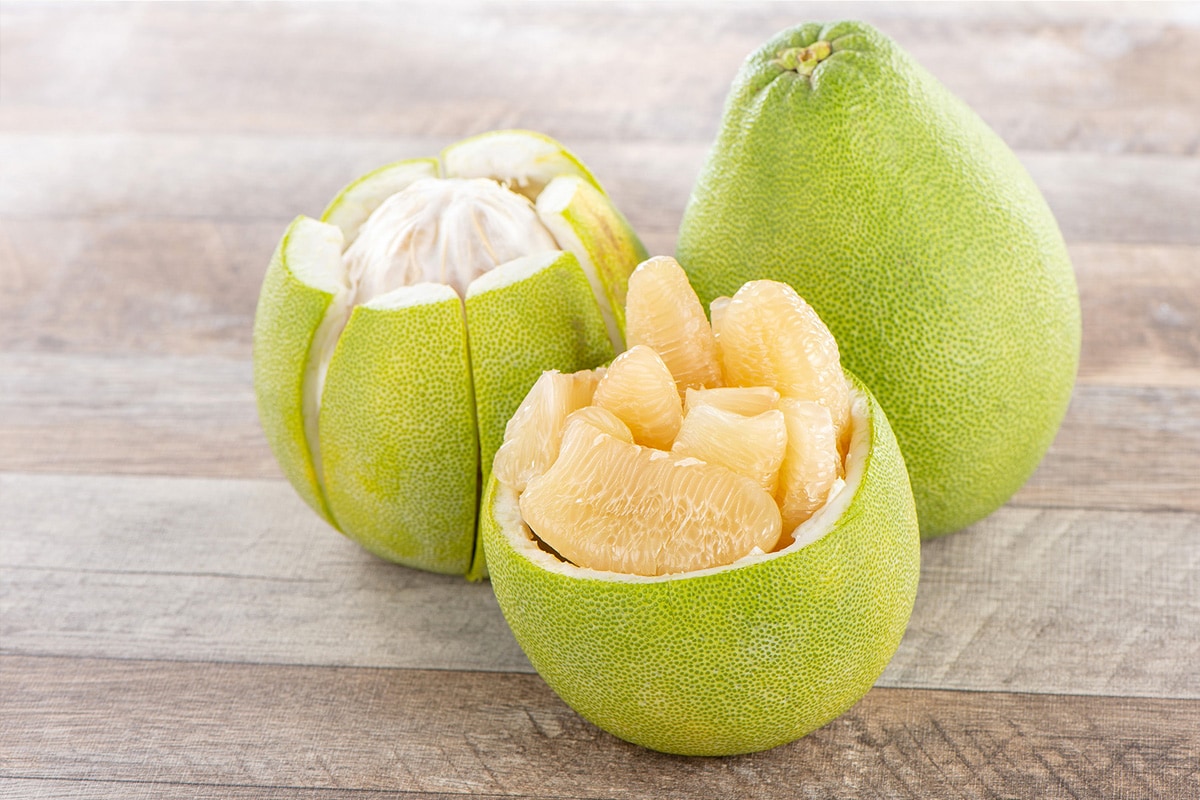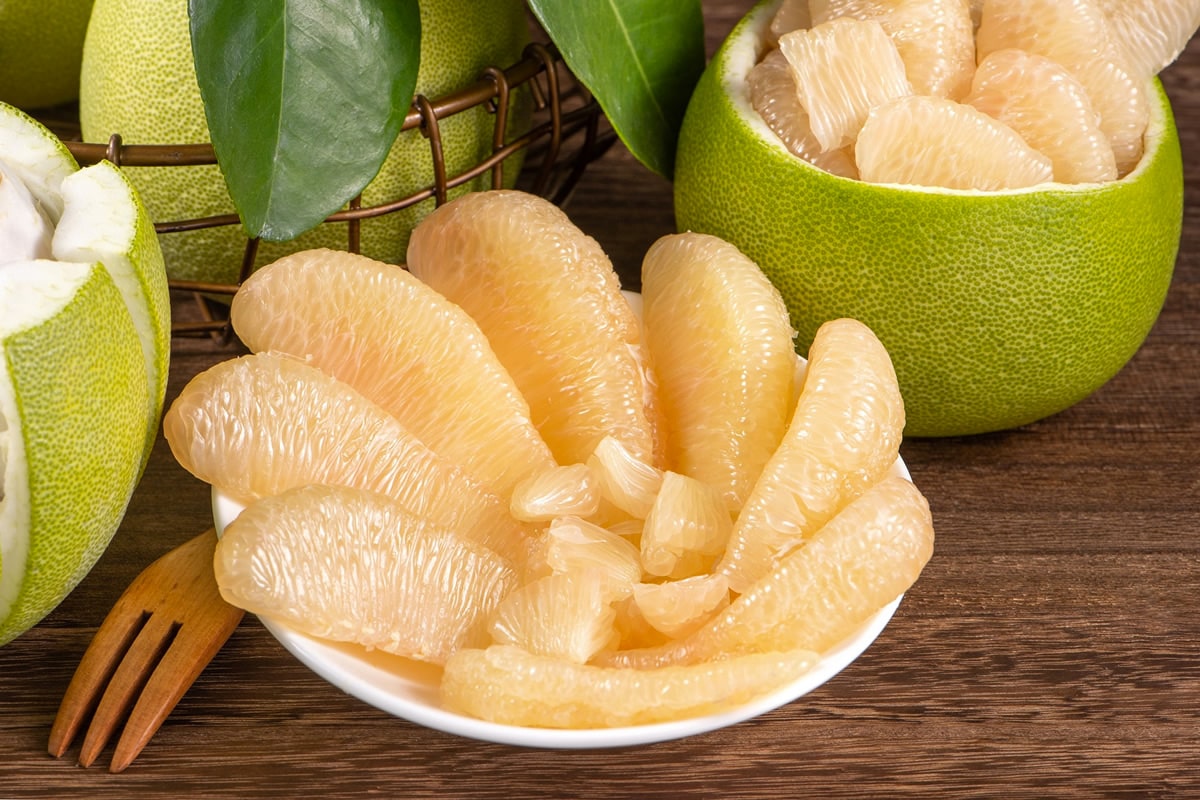Are you curious about how to tell if a pomelo is ripe and ready to eat? Look no further! Today, we’ll share some tips and tricks to help you determine when this delicious fruit is at its peak. Whether you’re a Pomelo pro or a first-time buyer, you’ll be able to confidently choose the perfect fruit for your next snack or recipe.

Are you ready to add a burst of citrusy goodness to your life with a juicy pomelo? Well, before you take a big bite, it’s important to know how to tell if a pomelo is ripe and ready to eat. Lucky for you, I’ve got all the tips and tricks to help you pick the perfect fruit.
Now, I know what you’re thinking. “What the heck is a pomelo?” Think of it as a grapefruit’s bigger, sweeter cousin. With its thick, green rind and juicy flesh, this fruit is the perfect addition to salads, desserts, and even cocktails.
This large citrus fruit is native to Southeast Asia and is known for its sweet and tangy flavor. But how do you know if a pomelo is ripe and ready to eat?
First things first, let’s talk about why it’s so important to pick a ripe pomelo. A ripe pomelo will be sweeter and juicier, making it much more enjoyable to eat. Plus, an unripe pomelo can be pretty tough and bitter, so it’s definitely worth taking the time to pick a good one.
So, let’s dive into the world of pomelos and share everything you need to know about picking the perfect fruit. From checking the weight to feeling the skin, we’ll cover all the juicy details.
How to Check if the Pomelo Is Ripe?

Appearance
First, you need to look for the right color. The color of a pomelo’s skin can vary depending on the variety, but a ripe pomelo should have a bright, vibrant color. The skin should be a uniform shade, with no green patches or discoloration. If the skin is too hard or too yellow, it may not be ripe yet.
When selecting a pomelo, be sure to examine it closely for any signs of damage or decay. A ripe pomelo should feel heavy for its size and have a slightly sweet aroma.
Smell
Now it’s time to use your nose! Smelling a pomelo is a great way to determine its ripeness. A ripe pomelo will have a sweet, fragrant aroma that is hard to miss. It should smell fresh and citrusy, with a subtle floral undertone. If the pomelo smells sour or musty, it’s likely overripe or spoiled.
When you’re smelling a pomelo, be sure to get up close. Hold the fruit up to your nose and take a deep sniff.
You can also gently squeeze the pomelo to release its scent. If you’re having trouble smelling anything, try scratching the skin lightly with your fingernail to release some of the oils.
Remember that the smell of a pomelo can vary depending on the variety and where it was grown. Some pomelos may have a stronger scent than others, so use your judgement and trust your nose.
If the pomelo smells good, it’s likely ripe and ready to eat!

Weight
When it comes to picking the perfect pomelo, weight is an important factor to consider. A ripe pomelo will feel heavy for its size, indicating that it is full of juicy flesh.
When you pick up a pomelo, it should feel dense and firm in your hand.
If it feels light or airy, it may be underripe or dried out. One way to determine the weight of a pomelo is to compare it to other fruits of similar size.
For example, if you have a grapefruit and a pomelo that are both roughly the same size, the pomelo should feel heavier due to its thicker rind and more substantial flesh.
Another way to check the weight of a pomelo is to give it a gentle squeeze.
If it feels soft or spongy, it may be overripe or starting to spoil. On the other hand, if it feels rock-hard, it may still be underripe.
Remember, a heavy pomelo is a good sign that it is ripe and ready to eat. So next time you’re at the grocery store or farmer’s market, be sure to give your pomelos a good heft before making your selection.
Sound
Sound is another important factor to consider. When you tap the fruit, it should produce a deep, hollow sound. This indicates that the fruit is full of juice and ready to eat. If the sound is dull or flat, it could mean that the fruit is underripe or overripe.
To properly test the sound of a pomelo, hold the fruit in one hand and use your other hand to tap it with your knuckles.
Start at the top of the fruit and work your way down to the bottom, tapping gently but firmly. Listen for the sound that the fruit produces and pay attention to any variations in tone.
If you’re not sure what a ripe pomelo should sound like, try tapping a few different fruits at the grocery store to get a sense of what to listen for.
With a little practice, you’ll be able to tell if a pomelo is ripe just by the sound it makes. In addition to sound, you can also use other senses to determine if a pomelo is ripe.
Texture

The texture is another key factor to consider. The fruit should feel firm but yield slightly to pressure when squeezed gently.
The flesh of a ripe pomelo should be juicy and tender, with a slightly grainy texture. When you bite into it, the fruit should feel refreshing and burst with flavor in your mouth. If the flesh is too dry or mealy, it may be underripe or overripe, respectively.
The skin of a ripe pomelo should be thick and firm, but not hard or tough. It should feel smooth and slightly oily to the touch, with no soft spots or bruises.
If the skin is too thin or wrinkled, it may be a sign of an older fruit that has been sitting on the shelf for too long.
🤔 Answering Your Questions:
What is the best color to look for when choosing a ripe pomelo?
The color of a ripe pomelo varies depending on the variety. Some pomelos have a greenish-yellow hue when ripe, while others may appear more yellow or even have a pinkish tone. Look for a bright, even color without any soft or brown spots.
How can I tell if a pomelo is overripe or spoiled?
An overripe or spoiled pomelo may have soft or mushy spots, dark blemishes, or an unpleasant odor. If the skin appears shriveled or has started to mold, the fruit is likely past its prime and should be discarded.
Can I ripen a pomelo at home if it’s not yet ripe?
Unlike some other fruits, pomelos do not continue to ripen after they have been harvested. It’s best to choose a ripe pomelo at the store, as it will not improve in quality once you bring it home.
How should I store a pomelo to maintain its freshness?
Store whole pomelos at room temperature, away from direct sunlight and heat sources. They can last for up to two weeks if properly stored. Once cut, store the pomelo segments in an airtight container in the refrigerator and consume them within a few days.
What is the best way to cut and peel a pomelo?
To cut and peel a pomelo, slice off the top and bottom ends to create a flat surface. Then, use a sharp knife to carefully remove the thick peel and white pith, following the curve of the fruit. Cut the pomelo into segments and remove the tough membrane before enjoying the juicy flesh.

Leave a Reply